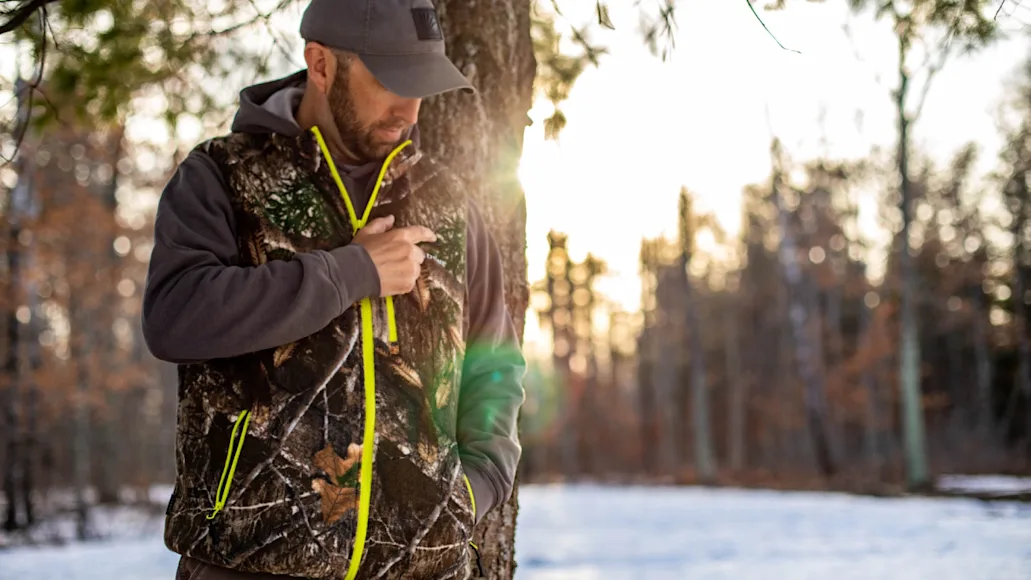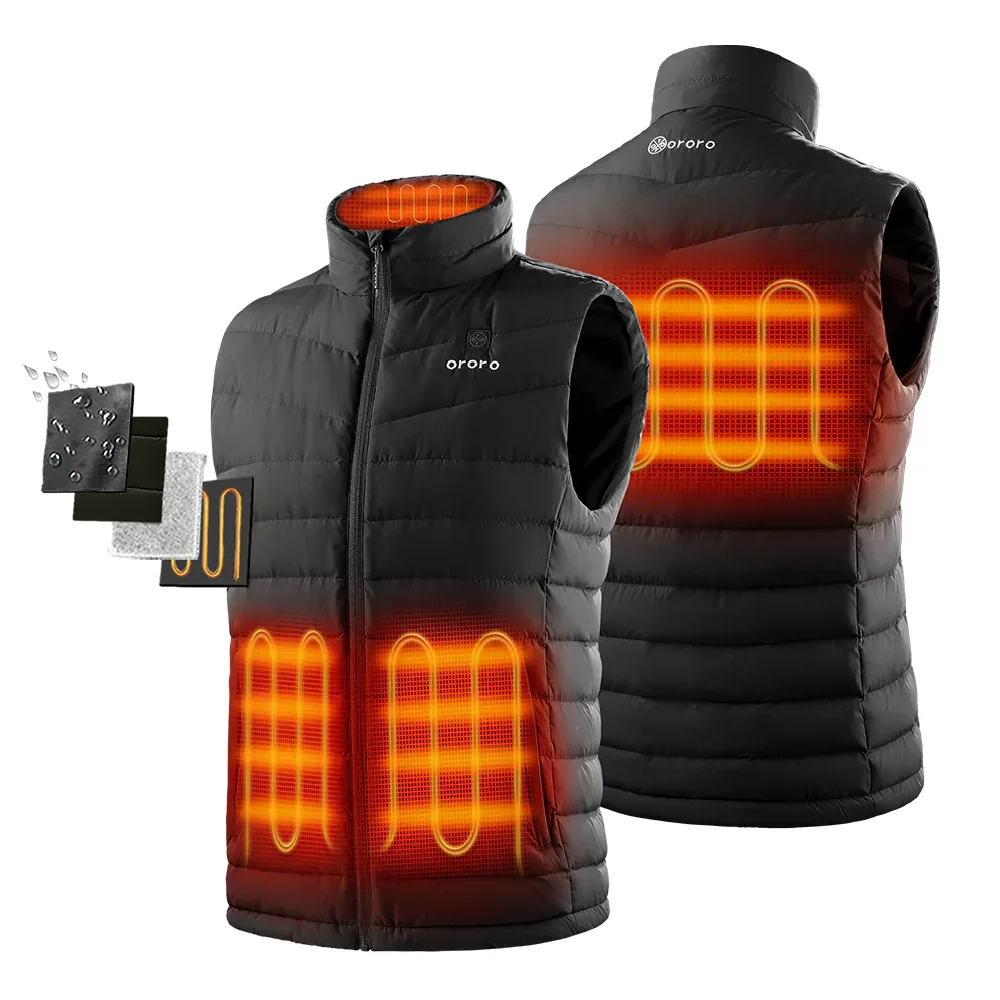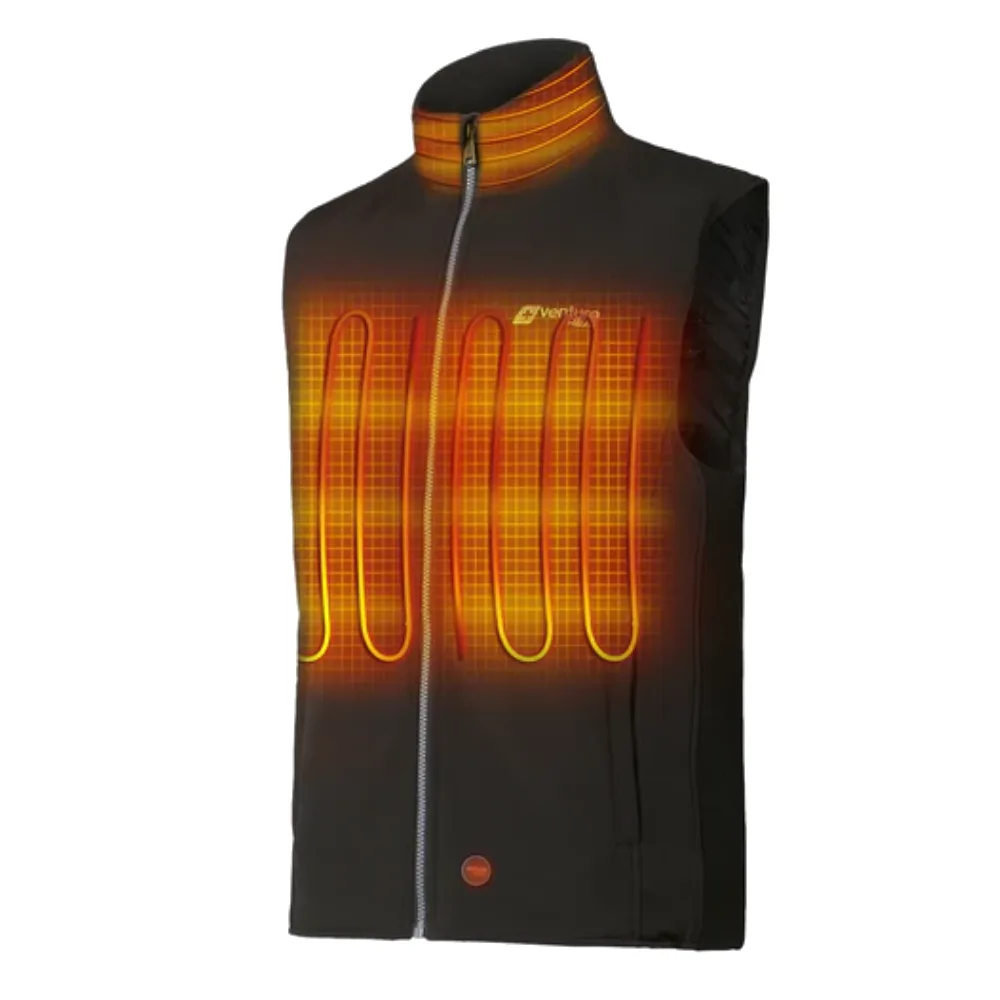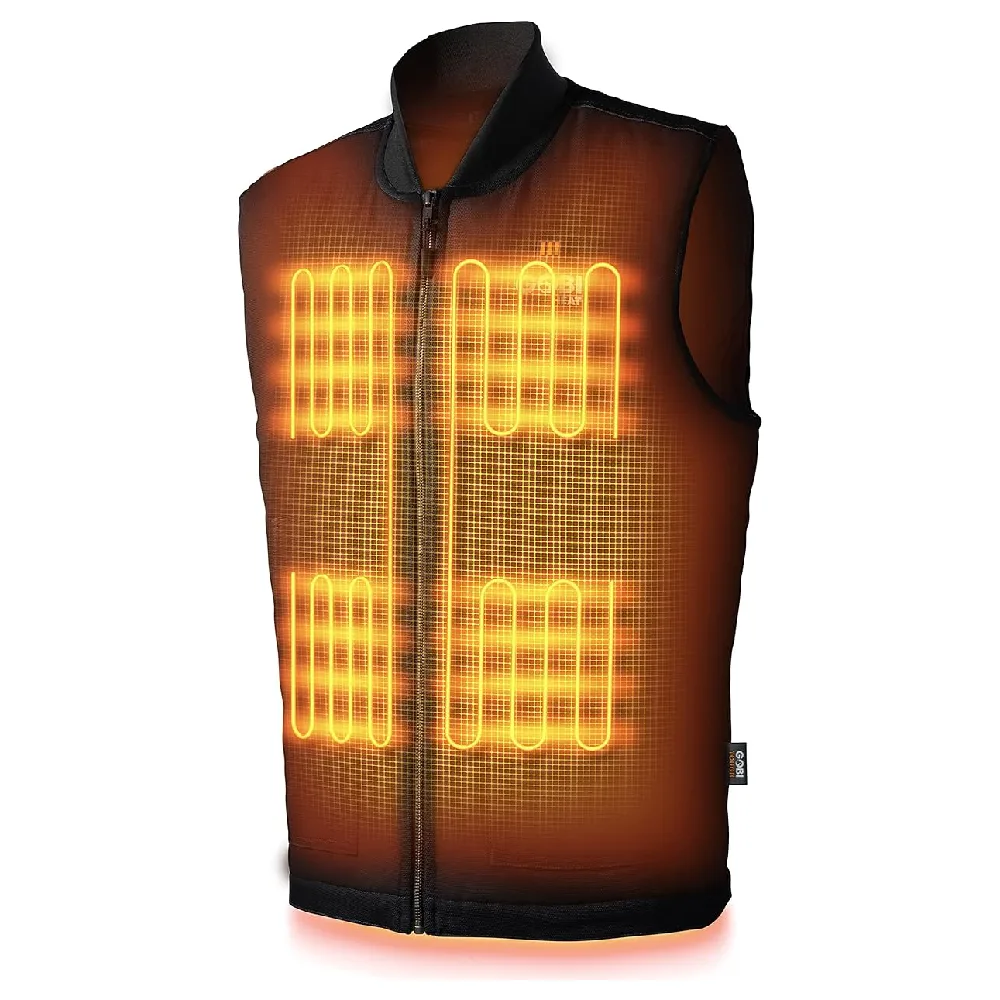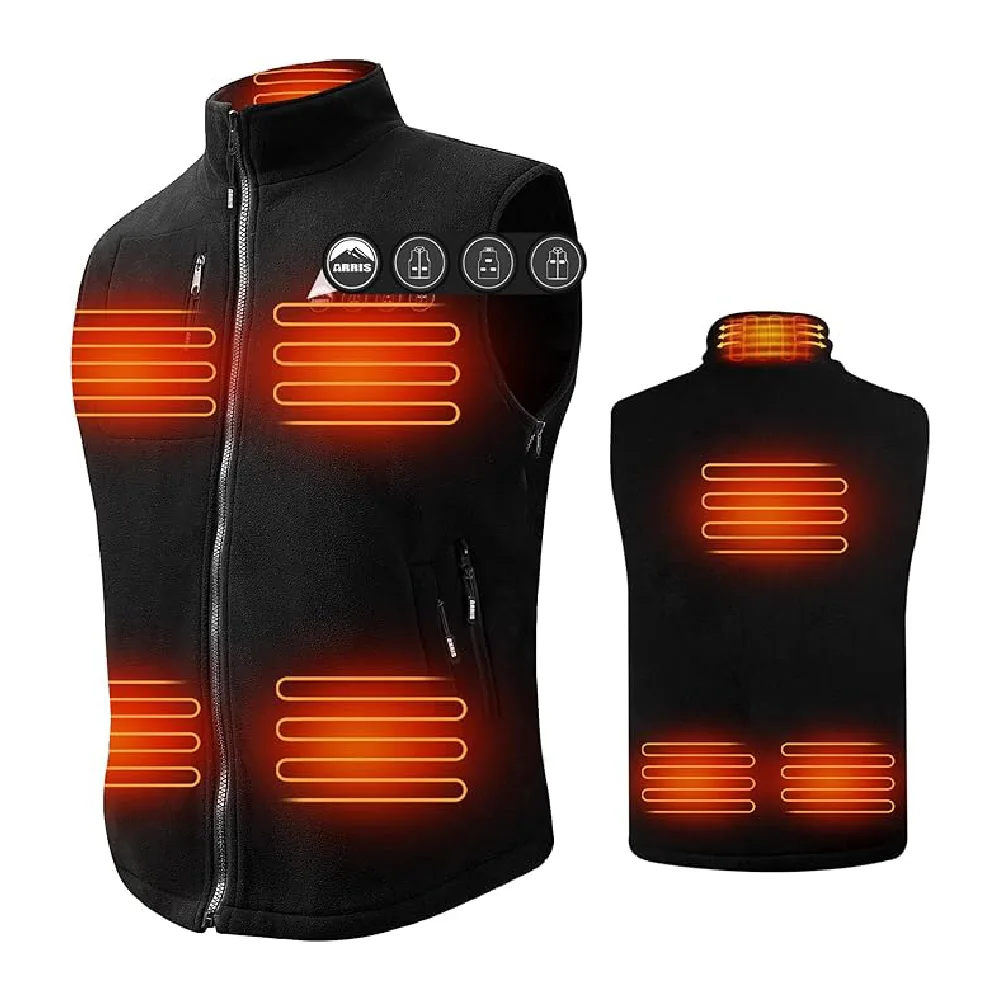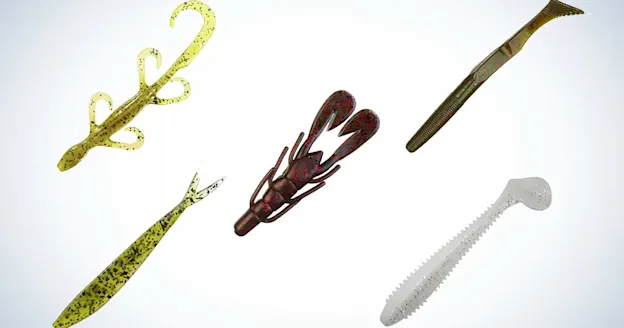We may earn revenue from the products available on this page and participate in affiliate programs. Learn more ›
Heated vests may seem a little over-the-top, but hear us out. Unpredictable weather during the fall and early spring can make picking appropriate outdoor clothing rather challenging. It’s often too cool for summer wear, yet too warm to break out the winter jackets. Enter the vest. Not only are vests great for working outside or hunting during transition seasons, they’re also a good choice for colder temperatures—especially if you choose one that provides electric heat via a battery.
With a heated vest, you’ll stay warm and toasty for hours longer than if you were wearing a regular vest, and you’ll get greater range of movement than a jacket. Stores are inundated with outerwear these days, so we did all the testing and the research for you to find the best of the best heated vests.
Best Overall: Ororo Lightweight Heated Vest
Best for Hunting: Tidewe Heated Vest
Best for Men: Venture Heat ProMax Heated Vest
Best for Work: Gobi Heat Ibex Workwear Vest
Best Fleece: Arris Heated Vest
Best Overall: Ororo Lightweight Heated Vest
Specs
Material: Polyester and nylon
Battery: Removable 7.4 volt, 4800 mAh lithium polymer
Heat Zones: 4
Advertised Runtime: 10 hours
Pros
Tons of pockets
Good battery life
Great zippers
Cons
Back pockets are a little small
Why isn’t there a blaze orange option?
Hunters have a ton of small odds and ends, and the Ororo heated vest is a great way to organize them all. It has 14 pockets for everything from your cell phone and truck keys to extra shot shells. I love the fact that the two large front pockets utilize magnets as a closure system. This makes the vest nice and quiet for stand or blind hunting. The heating zones are be very effective at preventing heat loss, especially around the collar.
I like the fact the power button is tucked inside one of the chest pockets. It’s lighted to indicate the heating level, but it also won’t spook game since it’s tucked away out of sight. My only complaint is that Ororo doesn’t offer this vest in blaze orange. It would be great as an outer layer for safety. Plus, the vest has all the pockets to be a solid upland hunting vest. The back pocket is a little too small for larger upland birds like pheasants, but the rest of the pockets are great.
Ororo’s claim of 10 hours of battery life on low is accurate, although I expect users will stick to medium and high. I got about 3.5 hours of runtime on high, which was slightly more than advertised. But I feel like medium is the sweet spot for the best combination of heat and runtime with this vest.
Best for Hunting: Tidewe Heated Vest
Specs
Material: Polyester
Battery: 10000 mAh lithium-ion
Heat Zones: 4
Advertised Runtime: 10 hours
Pros
Easy to layer
Larger battery
Collar helps guard escaping heat
Cons
Noisy for hunting
The Tidewe heated vest is ideal for layering because it’s thin enough to wear under a heavier jacket. This makes it easy to keep your core body temperature up during winter activities. Like the Ororo, there’s an additional zone in the collar that really helps cut down on heat loss through the neck area. The 10000 mAh battery is another plus. It allows a slightly longer runtime on the middle and high settings, which. This is an ideal vest for fishing or for watching sporting events in cold conditions.
One downside of the vest is that the polyester material is a bit noisy. Because of that, it might not be best for hunting unless you are planning shots at longer ranges. However, it’s hard to beat the price point of this vest. It starts at $80 and tops out at $110 depending on size. That’s a great value considering many other vests start around the $200 mark and go up from there. Tidewe—which also makes a great pair of waders—offers the vest in both black and Realtree Edge camo.
Best for Men: Venture Heat ProMax Heated Vest
Specs
Material: Softshell fabric
Battery: 5000 mAh lithium ion x 2
Heat Zones: 5
Advertised Runtime: 11 hours
Pros
Extremely warm even without the batteries
Great looks
Excellent comfort
Cons
Power button is easy to bump
Some may not like the battery pack placement
The Venture Heat ProMax is an excellent vest for men that’s both stylish and functional. During my wear test, this vest had a great fit, and kept me sufficiently warm before I ever hit the power button. Once I turned it on, the five heat zones warmed quickly. I like the placement of all the zones. They helped to keep my core—and even my extremities—quite toasty. The vest’s simple design goes with just about all my regular fall wear and I’ve found myself reaching for it for a variety of activities.
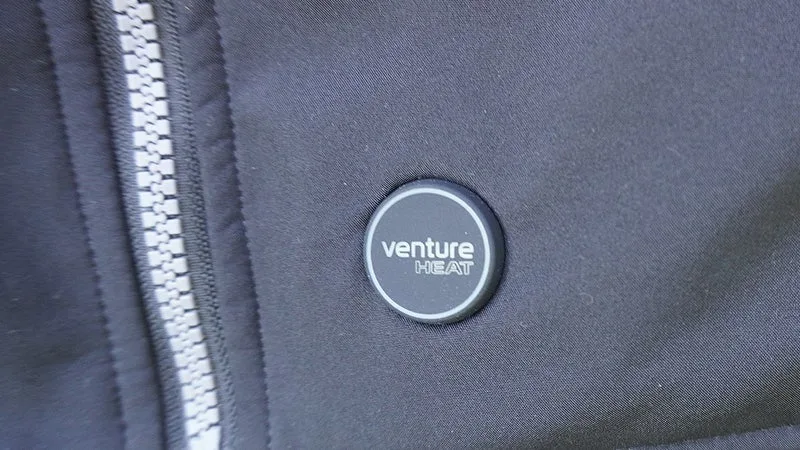
Some people might not like the placement of the two battery packs on the lower back while sitting, but it was manageable for me. One minor issue I had was the power button on the lower part of the vest. Several times I bumped it without realizing it until I looked down and saw it was a different color, indicating a different setting.
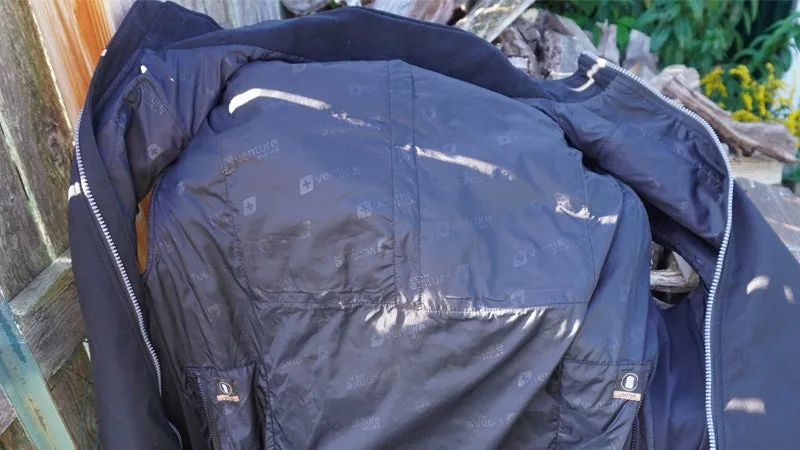
As far as battery life goes, the battery lasted for about 11 hours on the low setting. However, I feel like most people are going to utilize the high (red) setting. The runtime on high was a little over four hours, so it’s very power efficient. On the medium setting—which I found very comfortable—the battery ran for about six hours before dying.
Best for Work: Gobi Heat Ibex Workwear Vest
Specs
Material: Duck cotton and nylon
Battery: Removable 7.4 volt, 6500 mAh lithium polymer
Heat Zones: 5
Advertised Runtime: 9 hours
Pros
Comfortable for work
Heats quickly
Machine washable
Cons
Expensive
Battery is a little small
I’ve been using Gobi Heat products for a few years now and they are solid for warmth in cold weather. The Ibex heated vest is a purpose-designed work vest with five heat zones to keep your core toasty, especially when working or participating in other outdoor activities. I’ve found Gobi’s runtimes are mostly accurate, although the low settings are a bit difficult to feel if you have a ton of layers on. The battery with this vest is a little on the small side. However, it is also removable. I would pick up a spare for longer colder days.
One of the reasons I like this vest for work is simply because it is machine-washable, so it’s going to be much easier to maintain. For anyone who spends a lot of time working construction or doing ranch work, this vest will hold up to the abuse of working day after day. I also like the power buttons on Gobi’s products. They are easy to operate while also being robust enough that you won’t turn the vest off, or change the settings if you bump it.
Best Fleece: Arris Fleece Heated Vest
Specs
Material: Fleece
Battery: Removable 7.4 volt, 5500 mAh lithium polymer
Heat Zones: 8
Advertised Runtime: 7 hours
Pros
Extremely warm
Layers well
Highly adjustable
Cons
Battery takes a long time to charge
Arris makes an excellent heated vest that utilizes the insulating properties of fleece to trap all the warmth generated by the heat system. Fleece has some great moisture-resistant qualities that make this vest ideal for anyone planning to hunt or work in bad weather. This material is also incredibly comfortable.
This is another vest that utilizes an independent control system for the eight zones, which means you can turn the heat in for the areas you need it most. This feature alone makes this vest incredibly versatile. But it’s also thin enough to layer underneath a heavier jacket, adding to the value. The only downside we found is that the battery takes a long time to charge.
How We Tested Heated Vests
The most important aspect of a heated vest is the electrical components. For the vests I tested, I charged each battery to full and then ran it until it died. I did this for multiple settings to see exactly how long they’ll keep warm in cold temperatures. I evaluated the feel of the different heat levels and how much warmth they delivered.
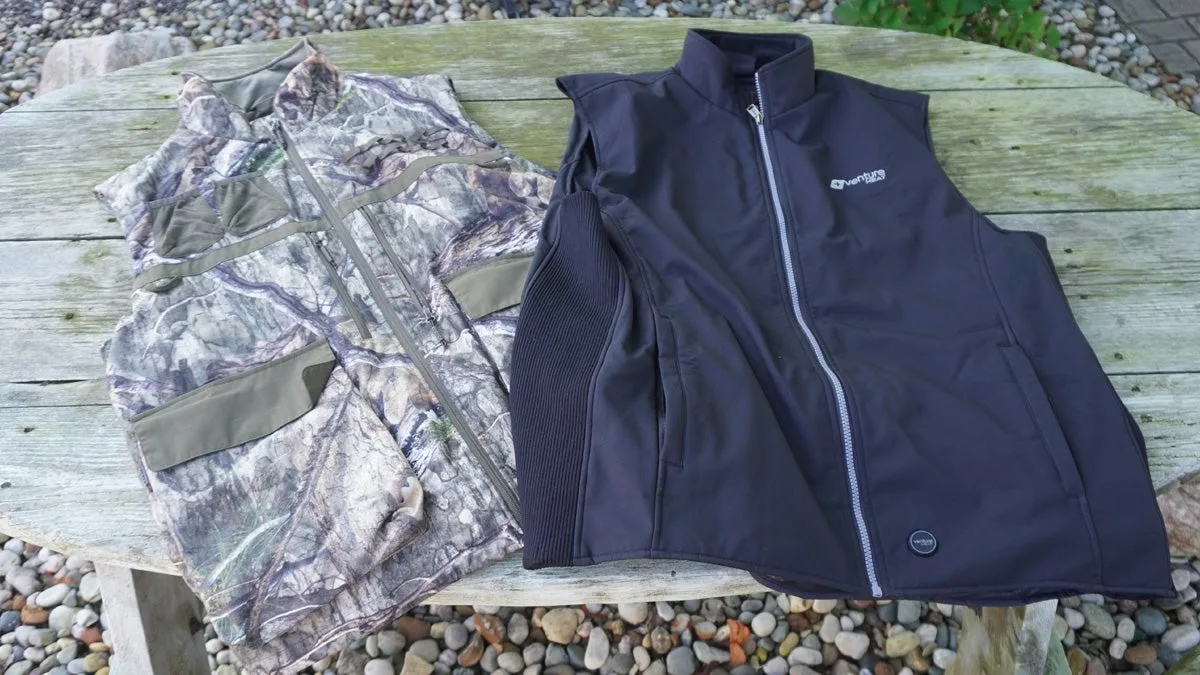
Additionally, I considered the following factors in picking my favorite vests.
Materials: What fabrics were used in the construction? How well do the outer layers and insulation retain the heat produced?
Components: What types of zippers, buttons, and other hardware were used for each vest? Are these components easy to operate in frigid temperatures?
Maintenance: Is the vest machine-washable?
Value: Does the price match the quality of the materials and the advertised battery life?
What To Look For in a Heated Vest
With electric vests, the entire concept is that being keeping your core body temperature up, the rest of your body will also stay warm. It’s a simple idea, but it works provided temperatures aren’t too extreme. That’s why the heated zones of each heated vest are just about identical regardless of brand, and model. Almost every vest feature chest and back zones. Most also have heat panels in the neck area which is an area of major heat loss in most garments.
Used in conjunction with warm socks, a hunting jacket, or thermal underwear, a vest can be extremely effective as part of an over-all warmth system. Because vests don’t have sleeves, they do offer a greater range of movement when used alone. This makes them ideal for working or other everyday activities that require a lot of movement.
When it comes to the heating systems themselves, we highly recommend getting something with different levels of adjustment. In my experience, the lowest settings are more battery efficient, but often don’t get warm enough to feel the heat properly. Especially if you’re layered up. I usually like to use at least a 10000 mAh battery for maximum heat time while I’m working or playing outside.
The good news is that most vest batteries are interchangeable with one another. If you aren’t pleased with the stock battery’s performance, it’s usually easy to upgrade to one that gets a better runtime.
Safety and Construction
The most common construction for heated vests is a nylon outer shell that adds a certain degree of water resistance. Some people have concerns about safely wearing one of these vests in a rain. However, the voltage of these vests is far too low to be dangerous, even if the vest gets completely soaked.
Many heated vests feature fleece for the lining. It’s easy to maintain and absorbs odors easily. Fleece is great for working because it’s a flexible material that breathes extremely well. The downside is that it is not the most environmentally friendly.
I’m also a stickler for zippers. Far too many outdoor companies have gotten cheap with these components in recent years. I personally like to look for larger zippers because they’re easier to grasp when temperatures drop. My favorites are YKK zippers because they are easy to use, and rarely get stuck on fabric or seize up.
FAQs
Q: Can you wear clothes over a heated vest? Most vests are worn as an outer layer, but it is possible to wear clothes over thinner ones. The best option is to wear a heavier winter jacket over the vest. It depends on how many layers one wears under the vest too. Because some heated vests can get quite thick.
Q: How long will a 10000mAh power bank last on a heated vest? Most manufacturers advertise a maximum battery life of 12-13 hours with a power bank of this size. However, in my experience, those times usually align with a heated garment used on the low setting. Expect six to eight hours with medium, and three to six hours with high for most vests. Extremely cold temperatures can negatively affect the battery life if exposed for prolonged periods.
Q: Should a heated vest fit tight? Most people will want a heated vest to fit slightly more snugly than a normal vest. The main reason is because if the vest is loose, you might not be able to feel the heated elements. This applies for just about any heated garment. Especially when running the heat on the lowest levels. I’ve personally found that most of my heated gear needs to be run on medium at a minimum for me to feel the effects. Try to keep the layers under the vest to a minimum because that can also affect how much heat makes it to your body.
Final Thoughts
While all the best heated vests on this list are quite capable, I liked the Venture Heat ProMax based on a combination of comfort and heating capabilities. The vest is heavy enough to work quite efficiently on its own. The stellar, battery-efficient heating system is just a bonus. In my mind, it’s the ideal fall, early winter, and spring vest for work and play.
Why Trust Us
For more than 125 years, Field & Stream has been providing readers with honest and authentic coverage of outdoor gear. Our writers and editors eat, sleep, and breathe the outdoors, and that passion comes through in our product reviews. You can count on F&S to keep you up to date on the best new gear. And when we write about a product—whether it’s a bass lure or a backpack—we cover the good and the bad, so you know exactly what to expect before you decide to make a purchase.

